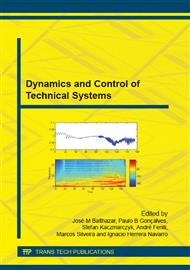p.1
p.6
p.14
p.25
p.35
p.44
p.54
p.69
p.81
Design of Satellite Attitude Control System Considering the Interaction between Fuel Slosh and Flexible Dynamics during the System Parameters Estimation
Abstract:
The design of the satellite Attitude Control System (ACS) becomes more complex when the satellite structure has different type of components like, flexible solar panels, antennas, mechanical manipulators and tanks with fuel, since the ACS performance and robustness will depend if the dynamics interaction effects between these components are considered in the satellite controller design. A crucial interaction can occur between the fuel slosh motion and the satellite rigid motion during translational and/or rotational maneuver since these interactions can change the satellite center of mass position damaging the ACS pointing accuracy. Although, a well-designed controller can suppress such disturbances quickly, the controller error pointing may be limited by the minimum time necessary to suppress such disturbances affecting thus the satellite attitude acquisition. It is known that one way to minimize such problems is to design controllers with a bandwidth below the lowest slosh and/orvibration mode which can result in slow maneuvers inconsistent with the space mission requirements. As a result, the design of the satellite controller needs to explore the limits between the conflicting requirements of performance and robustness. This paper investigates the effects of the interaction between the liquid motion (slosh) and the flexible satellite dynamics in order to predict what the damage to the controller performance and robustness is. The fuel slosh dynamics is modeled using its pendulum analogs mechanical system which parameters are identified using the Kalman filter technique. This information is used to designs and to compare the satellite attitude control system by the Linear Quadratic Regulator (LQR) and the Linear Quadratic Gaussian (LQG methods. Besides, one investigates the effects of the rod length estimation in the plant of the system stability. This investigation has shown that the poles of the plant to walk to and from the imaginary axis, leaving in the end the plant more stable.
Info:
Periodical:
Pages:
14-24
Citation:
Online since:
December 2014
Authors:
Keywords:
Price:
Сopyright:
© 2015 Trans Tech Publications Ltd. All Rights Reserved
Share:
Citation:


